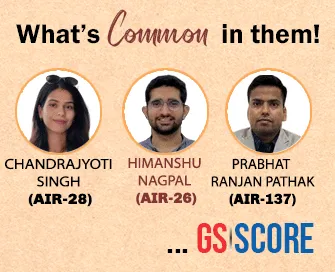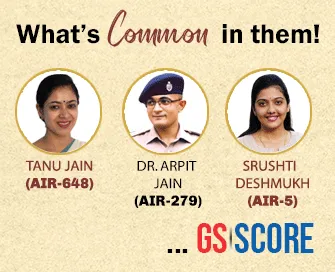

1st March 2025 (10 Topics)
Mains Issues
Context
In recent weeks, India and the European Union (EU) have been actively engaged in discussions about a major Free Trade Agreement (FTA), with a target to conclude the deal by end of 2025.
Key Highlights of the India-EU Engagement
- The FTA negotiations between India and the EU began in 2007, but were stalled for several years due to several unresolved issues.
- However, negotiations were relaunched in 2021 and now both sides are working with a specific deadline of end of 2025 to finalize the deal.
- This decision about the deal comes amidst growing global challenges, including US tariff policies and geopolitical tensions.
- Both India and the EU are bracing for reciprocal tariffs from the US, as President Trump has signaled plans to impose a 25% tariff on EU goods.
- Global Geopolitical Context: The world is experiencing significant geopolitical shifts, with major economies like China and Russia asserting more influence, especially in regions like the Indo-Pacific. Both India and the EU are looking to reimagine their partnership to counter these challenges.
- The India-EU FTA is seen as one of the largest potential trade deals, which could be the largest of its kind in the world. The deal is expected to open new trade opportunities, increase market access, and enhance cooperation across sectors like technology, investment, and security.
Why India is Crucial for Europe’s Future?
- Economic Growth: India is the fifth-largest economy globally and is projected to overtake Germany and Japan to become the third-largest economy within this decade. This makes India a vital economic partner for Europe as it seeks to diversify from over-reliance on China and maintain strong relationships with other advanced economies like the US.
- Manufacturing Potential: India is emerging as a key alternative supplier of manufactured goods. As global reliance on China diminishes, India’s growing manufacturing sector offers significant opportunities for Europe, especially with India’s expanding labor force and improving infrastructure.
- Energy Needs and Climate Change: India’s rising energy demands make it essential for any global strategy addressing climate change. India is increasingly focusing on renewable energy sources, and Europe needs India’s participation in the global transition to a low-carbon economy.
- Geopolitical Stability: India, as the world’s largest democracy and a key player in the Indo-Pacific region, serves as a stabilizing force in a geopolitically uncertain world.
The ‘Old India’ vs. the ‘New India’
Historically, European views of India have been shaped by outdated impressions of poverty, poor infrastructure, a reliance on coal, and bureaucratic inefficiencies. This view has led to a focus on areas such as:
- Trade Policy: Discussions around market access, such as visa agreements for Indian workers in exchange for reduced trade barriers for European goods.
- Climate Change: Europe’s emphasis on persuading India to reduce coal dependency and commit to climate change goals.
- Economic Development: Europe's attempts to replicate its own model by pushing for institutional reforms and market liberalization in India.
- Security: Encouraging India to side with the West in opposition to authoritarian regimes.
However, this perspective is outdated, and a new India has been emerging for some time, with significant reforms and transformations reshaping the country.
Key Changes in India’s Economy and Society
- Economic Transformation: India has become one of the world's fastest-growing economies. Over the last few decades, India’s growth has been robust, with GDP growth averaging more than 3% annually since the 1990s. The economy has shifted towards more open trade and higher exports, surpassing even China and Japan in some areas.
- Export Growth: India’s exports have grown at a faster rate than China’s between 2007 and 2019. Foreign Direct Investment (FDI) in India has also increased significantly, surpassing China as a percentage of GDP.
- Service and Manufacturing Sectors: Services, especially IT, have long been a strength of the Indian economy, but manufacturing is also growing. India has become a significant production hub for products like mobile phones and is home to more unicorn start-ups than the UK or Germany.
- Infrastructure Development: India’s infrastructure, particularly in electricity generation, has improved significantly. Over 50% of the country’s new electricity generation capacity comes from renewable sources, and digital infrastructure has expanded, improving financial inclusion.
- Reforms: The Indian government has launched several initiatives, including:
- Make in India: Aimed at boosting manufacturing through FDI, workforce skill development, and reducing administrative costs.
- PLI Schemes: To encourage investment in critical sectors like solar panel production.
Challenges India Still Faces
Despite significant improvements, India continues to face challenges:
- Income Inequality: Economic growth has been uneven, with many segments of society unable to benefit from the new opportunities.
- Job Creation: While productivity growth is strong among those employed, India faces a massive challenge in creating sufficient jobs for its growing labor force. Around 10 million people are expected to enter the labor market annually for the next decade.
- Governance and Implementation: India’s ambitious reforms often struggle with weak governance, leading to poor implementation and outcomes. The country’s financial system remains dominated by state-owned banks, and the judicial system faces inefficiencies.
What This Means for Europe?
Europe has a clear stake in India’s success. An economically strong and stable India will be a key ally for Europe in the following ways:
- Geopolitical Stability: India can help maintain global stability and provide an alternative source of goods and services, reducing Europe’s dependence on China.
- Climate Change: India’s efforts to expand its renewable energy sources are critical for global climate goals, and Europe can play a role in enabling India’s energy transition.
- Economic Growth: As India’s economy continues to grow, it will become an important market for European goods and services, creating new opportunities for European businesses.
India-EU Trade
|


Mains Issues
Context
The Supreme Court of India recently reprimanded the Chhattisgarh Police for adding charges under the stringent Unlawful Activities (Prevention) Act (UAPA) to an FIR against a man who was granted anticipatory bail in another case. The court expressed its displeasure, stating that the police's actions appeared to be a deliberate attempt to bypass the interim order granting protection from arrest.
What is UAPA?
- Unlawful Activities (Prevention) Act (UAPA) is a legislation aimed at preventing unlawful activities that threaten the sovereignty, integrity, and security of India.
- The Act provides special procedures to deal with terrorist activities, among other things.
- Also known as “anti-terror law”, the act was enacted in 1967 and later amended multiple times to strengthen provisions related to terrorism and unlawful activities.
- Definition of Unlawful Activity: Under UAPA, an "unlawful activity" includes any activity that causes disaffection towards India or harms the sovereignty and integrity of India.
- This provision mirrors the sedition charge under the Indian Penal Code (IPC), which criminalizes acts or speech that incite disaffection against the government.
- Section 15 of UAPA defines terrorist act as any act with intent to threaten or likely to threaten the unity, integrity, security, econo mic security, or sovereignty of India or with intent to strike terror or likely to strike terror in the people or any section of the people in India or in any foreign country.
- Punishment for Unlawful Activities (Section 13):
- Section 13 of UAPA deals with the punishment for engaging in or inciting unlawful activities. It includes advocating, abetting, or inciting any unlawful activity.
- Punishment: Individuals found guilty can be punished with imprisonment of up to seven years.


Prelims Articles
Context
The Employees' Provident Fund Organization (EPFO) has decided to retain the interest rate on employees’ provident fund deposits at 8.25% for 2024-25, the same as the previous year. This decision was made by the EPFO Central Board of Trustees.
About Employees' Provident Fund (EPF)
- The Employees' Provident Fund (EPF) is a statutory benefit payable to employees working in India.
- The Employees' Provident Funds and Miscellaneous Provisions Act, 1952 governs the EPF and is applicable across India, except Jammu and Kashmir.
- EPF Objective: It encourages employees to save for retirement.
Fact Box:EPFO (Employees’ Provident Fund Organization)
|


Prelims Articles
Context
The National Statistics Office (NSO) has released updated projections for the economy, including GDP (Gross Domestic Product) for FY 2024-25, quarterly estimates for October-December 2024-25, and revised data for previous years (2022-23 and 2023-24). These estimates are presented both at current prices and constant prices (2011-12 base).
Key Points:
- Growth Projections for FY 2024-25:
- Real GDP Growth: 6.5% (up from the earlier estimate of 6.1%)
- Nominal GDP Growth: 9.9% (higher than the previous estimate of 9.6%)
- Growth in the Previous Years:
- 2023-24: Real GDP grew by 2%, the highest in 12 years (except for the post-COVID year 2021-22). This growth was mainly driven by strong performances in the manufacturing, construction, and financial services sectors.
- 2022-23: Real GDP grew by 6%, mainly from the trade, financial services, and electricity sectors.
- Quarterly Estimates for Q3 of FY 2024-25:
- Real GDP for Q3 is estimated to grow by 2%.
- Nominal GDP for Q3 is expected to grow by 9%.
- Sector-wise Growth in FY 2024-25:
- The construction sector is expected to grow by 6%.
- Financial services, real estate, and professional services are projected to grow by 2%.
- Trade, hotels, transport, communication, and broadcasting services are expected to grow by 4%.
- Private Consumption (PFCE): Private consumption is expected to grow by 6% in FY 2024-25, up from 5.6% in FY 2023-24.
Revised Estimates for Past Years (2022-23 & 2023-24)
- 2023-24:
- Real GDP grew by 9.2%, with strong performances in sectors like manufacturing (12.3%) and construction (10.4%).
- Nominal GDP grew by 12%.
- Private Consumption increased by 7.6%.
- 2022-23:
- Real GDP grew by 7.6%, mainly driven by trade, financial services, and electricity.
- Nominal GDP grew by 14%.
- Private Consumption grew by 8.1%.
Summary of the Key Economic Terms:
|


Prelims Articles
Context
There is growing distress caused by microfinance loans (MFIs) in rural Karnataka, where many borrowers are facing significant financial hardships.
What is Microfinance lending?
- Microfinance lending refers to providing small loans, typically to individuals or small businesses in low-income or rural areas, who don't have access to traditional banking services.
- These loans are usually given without requiring collateral and are meant to help people start or expand small businesses, improve their living conditions, or cover emergency needs.
- The idea is to empower people, particularly those from marginalized groups, by giving them access to credit to improve their financial situation.
- Microfinance institutions (MFIs) are the organizations that offer these loans. They operate under the belief that even people with very low incomes can repay small loans, provided they are offered the opportunity. MFIs usually work with individuals who may not qualify for conventional bank loans due to factors like lack of a credit history or collateral.
- The loans are often used for purposes like:
- Starting or expanding a small business (e.g., selling goods or providing services)
- Paying for education or healthcare
- Covering emergency costs (e.g., repairing a house or buying farming tools)
Evolution of the Microfinance Sector in India:
The microfinance sector in India has evolved over four distinct phases:
- Initial Period (1974–1984):
- In 1974, the Shri Mahila Sewa Sahakari Bank was established to provide financial services to women in the unorganized sector.
- In 1984, the National Bank for Agriculture and Rural Development (NABARD) advocated for Self Help Group (SHG) linkage, which became a key tool in poverty alleviation.
- Change Period (2002–2006):
- 2002: Norms for unsecured lending to SHGs were aligned with those for secured loans, creating an environment for increased lending.
- 2004: The Reserve Bank of India (RBI) recognized microfinance as part of the priority sector, formally acknowledging MFIs as instruments for financial inclusion.
- 2006: Allegations of high interest rates and unethical recovery practices resulted in the shutdown of some MFI branches, bringing the sector under scrutiny.
- Growth and Crisis (2007–2010):
- 2007: Private equity players entered the microfinance market, leading to rapid growth in the MFI loan book.
- 2009: The formation of the Microfinance Institutions Network (MFIN) allowed NBFC-MFIs to operate more cohesively and regulate themselves.
- 2010: The Andhra Pradesh crisis, marked by aggressive debt collection practices and borrower suicides, led to government intervention and the implementation of an Ordinance that significantly impacted MFIs.
- Consolidation and Maturity (2012–2015):
- 2012: The Malegam Committee provided recommendations, which resulted in new RBI regulations aimed at stabilizing the sector.
- 2014: RBI granted Bandhan Bank, the largest microlender, a universal banking license, marking the mainstreaming of microfinance.
- 2015: The government launched the MUDRA Bank, aimed at financing small businesses and promoting entrepreneurship.
Government Measures for the Development of Microfinance Institutions (MFIs)
|
PYQQ. Microfinance is the provision of financial services to people of low-income groups. This includes both the consumers and the self-employed. The service/ services rendered under microfinance is/are (2011)
Select the correct answer using the codes given below the lists:
Solution: (d) |


Prelims Articles
Context
Former Sri Lankan Northern Provincial Council Chief Minister C.V. Wigneswaran urged Tamil Nadu Chief Minister M.K. Stalin to address the long-standing issue of destructive bottom-trawling, emphasizing that ending the practice would protect the livelihoods of fishermen in Tamil Nadu and northern Sri Lanka.
What is bottom-trawling?
- Bottom-trawling is a highly destructive and controversial fishing method that involves dragging large nets across the seabed to catch fish and other marine organisms.
- The process effectively scoops up not only the target fish and seafood species but also a wide range of non-target marine life, such as shrimps, eggs, and other organisms, along with seabed habitats like corals, mollusks, and other important marine ecosystems.
- This method is typically used to catch large quantities of fish and seafood quickly, making it a preferred practice in commercial fishing.
- However, it has several severe environmental and economic consequences:
- Economic and Social Impact:
- Impact on Local Fishermen: Small-scale, traditional fishermen, especially those relying on sustainable fishing methods, are severely impacted by bottom-trawling. The depletion of fish stocks reduces their catch, making it harder for them to earn a living. Additionally, bottom trawlers often damage local fishermen’s gear, further exacerbating the challenges faced by these communities.
- Conflict Between Nations: As seen in the context of Tamil Nadu and northern Sri Lanka, the practice has led to tensions between neighboring countries, as illegal trawling in the territorial waters of one nation by fishermen from another can provoke diplomatic and social conflict.


Prelims Articles
Context
India’s first solar mission, Aditya-L1, has made a historic advancement in solar research. Through its instrument, the Solar Ultraviolet Imaging Telescope (SUIT), Aditya-L1 has captured an extraordinary observation of a powerful solar flare, providing new insights into solar activity.
Key-highlights
- The SUIT onboard Aditya-L1 captured an 3-class solar flare—one of the most intense solar flares observed.
- This solar flare was observed in the near-ultraviolet (NUV) wavelength range (200-400 nm), and it marks the first time the Sun’s entire disk has been imaged in this wavelength with such detail.
- Role of SUIT:
- Historically, while solar flares have been observed for over a century, data in the Near Ultraviolet (NUV) band has been largely unavailable due to the lack of dedicated space telescopes. The SUIT instrument on Aditya-L1 has now filled this gap, offering high-resolution observations of solar flares, which were previously difficult to capture with such clarity.
- One of the most significant findings from the SUIT’s observations is the detection of localized brightening on the Sun’s surface.
- This brightening corresponds to a rise in plasma temperature in the solar corona, the outermost layer of the Sun. This finding confirms long-standing theoretical predictions about how energy from solar flares heats up the corona.
- Significance: The data will help scientists better understand the dynamics of solar flares and their energy transfer processes. By observing the direct relationship between flare energy deposition and the heating of the corona, these observations provide critical insights that have long been theorized but never directly observed.
Fact Box:What is Aditya-L1?
What is solar flare?
|


Editorials
Context
The Meghalaya High Court has recently initiated suo motu public interest litigation to monitor the conservation of wetlands in the state. This brings focus to the growing importance of wetland ecosystems, especially on World Wetland Day (February 2), marking the Ramsar Convention's adoption. The theme for this year, “Protecting Wetlands for Our Common Future,” highlights wetlands' crucial role in sustainable development as per the Brundtland report.
Wetland Importance and Global Concerns
- Wetlands as Key Ecosystems: Wetlands cover 6% of Earth's surface and provide 40.6% of global ecosystem services. They are critical for biodiversity, water management, and carbon storage.
- Global Wetland Decline: Since 1900, 50% of wetland areas have been diverted, and between 1970 and 2015, wetland surface area shrank by 35%. The annual loss of wetlands is over three times higher than natural vegetation loss.
- Increasing Threats to Wetland Species: 81% of inland wetland species and 36% of coastal species have declined since 1970. The extinction risk for wetland species is rising globally, urging immediate action.
Challenges and Strategic Approaches for Conservation
- Need for Comprehensive Wetland Management: Conservation requires more than isolated efforts. Wetlands' conservation needs integration with broader environmental and developmental strategies, as emphasized in Ramsar's COP14.
- India’s Wetland Crisis: India, with 75 Ramsar sites, has lost around 30% of its natural wetlands over the last 40 years due to urbanization and pollution. Key cities like Mumbai, Kolkata, and Chennai have seen dramatic wetland losses, severely impacting ecosystem services.
- Role of Wetlands in Climate Change: Wetlands act as carbon sinks and play a vital role in mitigating climate change. Their degradation exacerbates climate impacts, necessitating effective management strategies to address climate and human-induced pressures.
Conclusion and Governance for Wetland Conservation
- Wetlands' Socio-Economic and Ecological Value: Beyond ecological functions, wetlands are crucial for social and economic security, providing water, livelihood, and natural resources to local communities. Their preservation must align with broader national and international development goals.
- Innovative Management for Wetland Sustainability: Conservation requires ecosystem-based, innovative strategies to restore wetlands and balance ecological health with human needs, focusing on governance reforms and stronger implementation of the Ramsar Convention.
- Need for Strategic Global Collaboration: Addressing wetland loss is integral to achieving global environmental targets like SDGs and the Paris Agreement. Strengthening governance, stakeholder engagement, and resource allocation will be key for effective global wetland conservation.
Practice Question:
Q. What are the key challenges in the conservation of wetlands in India? Discuss the need for integrated management approaches in ensuring the sustainability of wetland ecosystems.


Editorials
Context
India's textile industry, the second-largest employer in the country, is poised for significant growth. With the government’s support through schemes like PM MITRA, PLI, and RoSCTL, the sector has the potential to become a USD 250 billion market by 2030. India can emerge as a global textile powerhouse, especially as countries like China, Bangladesh, and Vietnam face internal and external challenges, providing an opportunity for India to capitalize on this shift.
Opportunities for Growth in the Textile Sector
- Global Demand and Domestic Potential: The textile sector's growth prospects are bolstered by a growing middle class and increased consumption from Gen Z. The rise of e-commerce and quick commerce further amplifies the demand for apparel, providing a significant domestic market for textiles. Despite challenges like the pandemic, India's consumption patterns remain strong.
- Government Support and Strategic Initiatives: India has undertaken substantial initiatives, such as the Pradhan Mantri Mega Integrated Textile Region and Apparel (PM MITRA) Parks, the Production Linked Incentive (PLI) Scheme, and the Rebate of State and Central Taxes and Levies (RoSCTL) Scheme to incentivize and boost the textile sector. These schemes aim to enhance competitiveness and increase the sector’s contribution to the economy.
- Leveraging Shifts in Global Textile Markets: The global textile market is shifting as geopolitical and economic changes impact China, Bangladesh, and Vietnam. India’s stable economy, skilled workforce, and centuries-old textile tradition position it well to capture this market share, especially with favorable government policies and strategic international relationships.
Challenges and Solutions for India’s Textile Industry
- Labour Shortages and Cost Disadvantages: Despite the growth potential, India faces a 15-20% cost disadvantage in textile manufacturing, primarily due to lower labor efficiency. Additionally, there are labor shortages, with key hubs like Tiruppur struggling to maintain a stable workforce, as workers often migrate or leave for better pay.
- Building Infrastructure and Reducing Attrition: To address labor shortages and reduce high attrition rates (10%), India must create jobs in regions where labor is abundant, like Uttar Pradesh, Bihar, and Madhya Pradesh. Implementing policies for industrial housing near factories can improve retention, reduce absenteeism, and improve worker productivity by lowering transportation costs and increasing take-home salaries.
- Empowering Women through Stable Jobs: Women represent 90% of the blue-collar workforce in the textile industry. Ensuring stable, safe, and well-compensated jobs in the sector can empower women, integrate them into the formal economy, and lead to overall economic growth. Government support for infrastructure and policy reforms can make this possible, ensuring that the industry thrives sustainably
Automation and Technology Integration
- Balancing Automation and Job Creation: While automation can improve efficiency, it need not result in job losses. Technology can coexist with human talent, enhancing productivity and fostering sector growth. As efficiency improves, the industry can expand, leading to the creation of more jobs rather than reducing the workforce.
- Opportunity to Compete Globally: India has a demographic advantage and economic potential to become a leading textile exporter. By addressing labor issues, investing in infrastructure, and leveraging technology, India can become a global giant in the textile industry, replacing China, Bangladesh, and Vietnam as the world’s largest textile exporter.
- Government and Industry Collaboration: The government must continue to support the textile sector through infrastructure development, including industrial housing and enhanced labor policies. Collaboration between the public and private sectors is crucial to capitalizing on this opportunity and ensuring that India remains competitive in the global textile market.
Practice Question:
Q. In the context of India’s textile sector, discuss the opportunities and challenges the industry faces in becoming a global leader by 2030. What role should the government play in addressing labor issues and promoting sustainable growth?


Editorials
Context
India is facing increasing competition in the global Artificial Intelligence (AI) sector, particularly from China and Southeast Asia. The country's software developers are struggling to secure major AI-driven projects due to concerns over AI capabilities and market regulations. The race to catch up with Silicon Valley and avoid being overtaken by rivals highlights the strategic crossroads India faces in balancing AI development and regulatory challenges.
Challenges in AI Adoption and Regulation
- Export Competitiveness and AI Adoption: India’s AI export competitiveness depends on the widespread integration of AI into its services and consultancies. However, concerns around job losses, algorithmic biases, and misinformation hinder the speed of AI adoption, especially with challenges like deepfakes eroding public trust.
- Misinformation and Regulatory Issues: The proliferation of misinformation through AI and the issue of intermediary liability are key concerns. Indian startups face difficulties due to the influence of foreign tech giants, which set the rules of engagement, making it harder for local firms to compete and innovate.
- Impact of Regulatory Overreach: While India is exploring AI regulation, over-regulation could stifle technological progress. Stringent rules may harm India’s ability to compete globally, especially when rivals like China and the U.S. have opted for less restrictive approaches, potentially giving them a competitive edge.
India’s Strategic Position in the Global AI Race
- India’s IT Advantage and Regulatory Challenges: India’s strong IT sector gives it an advantage in the AI race, but it faces a dilemma between emulating the EU’s strict regulatory stance or the U.S.’s innovation-first approach. India’s regulatory decisions will significantly impact its global competitiveness in AI.
- EU vs. U.S. Regulatory Models: The European Union has stringent AI regulations due to its structural deficiencies, such as the lack of a supranational constitution to protect human rights. In contrast, the U.S. prioritizes AI innovation and minimal regulation, providing different models for India to consider in framing its approach.
- Risk of Losing Global Market Position: Introducing overly restrictive AI regulations could cause businesses to relocate their research and development to countries with more favorable AI policies. India must avoid regulatory frameworks that inhibit the growth of its AI-driven services and ensure that its industry remains competitive on the global stage.
Regulatory Clarity and Path Forward
- The Need for Regulatory Clarity: India’s policy landscape is currently fragmented, with conflicting guidelines regarding AI, leading to uncertainty. Drawing lessons from the EU and the U.S., India should focus on strengthening existing laws rather than creating new, AI-specific regulations, to avoid overlapping liabilities.
- Strengthening Existing Laws: India has a robust legal framework covering antitrust, corporate liability, and public order, which can be adapted to address AI-related issues. The current framework, with some reinterpretation, can adequately cover AI concerns without the need for an entirely new regulatory regime.
- Strategic Path for AI Development: India must chart its own path based on national interests, focusing on rapid AI adoption and supporting open-source alternatives. This approach would ensure that AI technologies remain accessible, commercially viable, and aligned with India’s competitive goals in the global market.
Practice Question:
Q. In light of the global AI race, discuss the regulatory challenges India faces in adopting AI technologies. How should India balance innovation with regulation to maintain its competitive edge in the global AI market?



